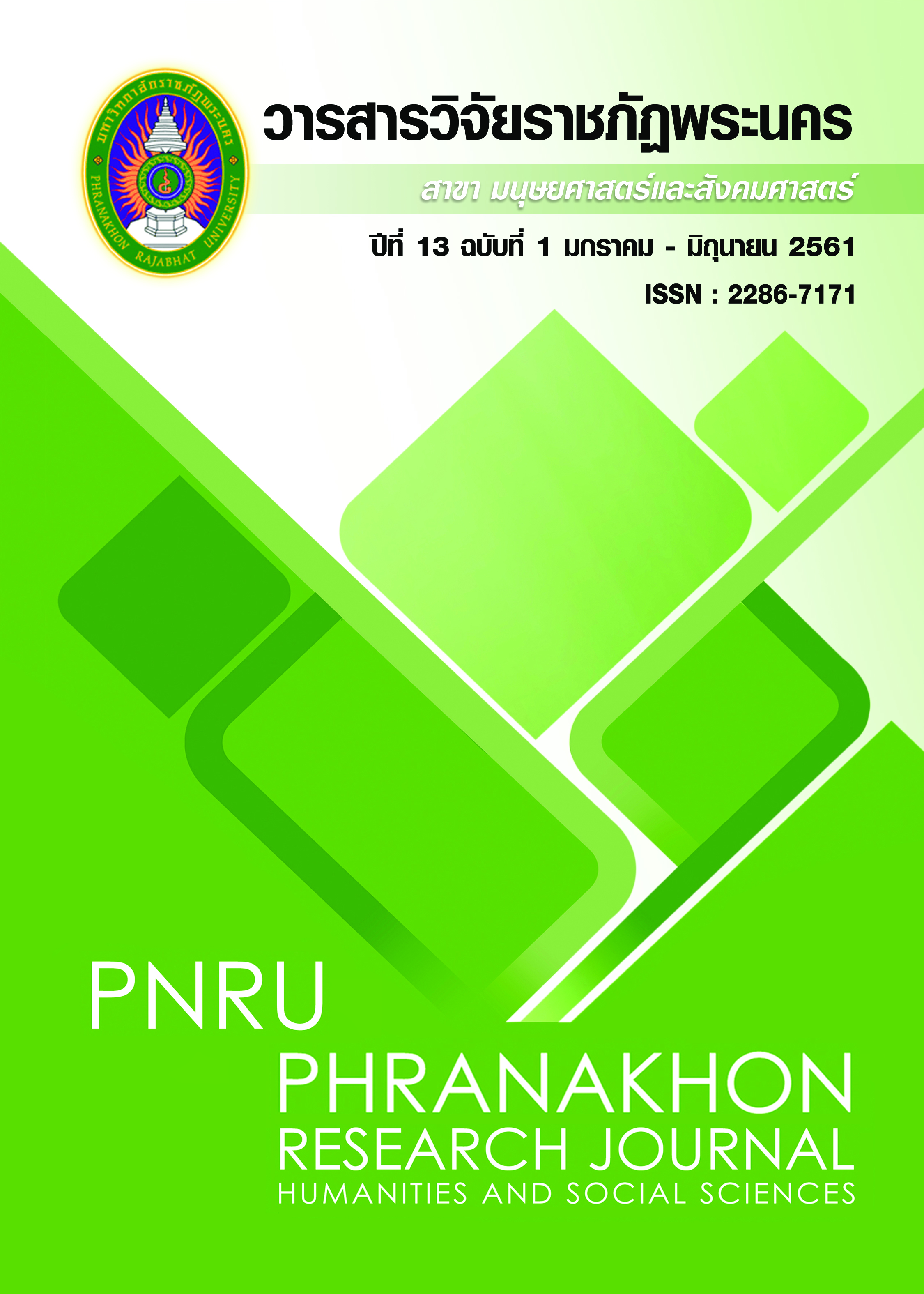FACTORS INFLUENCING THE PROFITABILITY OF THE THAI COMMERCIAL BANKS
Main Article Content
บทคัดย่อ
การศึกษานี้มีวัตถุประสงค์เพื่อวิเคราะห์ปัจจัยกําหนดความสามารถในการทํากําไรของธนาคาร พาณิชย์ที่จดทะเบียนในตลาดหลักทรัพย์แห่งประเทศไทยจํานวนทั้งสิ้น 11 ธนาคาร ผ่านผลการวิเคราะห์ ที่ได้จาก 3 ตัวแบบคือ 1) ตัวแบบอัตราผลตอบแทนต่อสินทรัพย์ 2) ตัวแบบอัตราผลตอบแทนต่อผู้ถือหุ้น สามัญ และ 3) ตัวแบบกําไรสุทธิต่อหุ้น โดยอาศัยข้อมูลจากฐานข้อมูล DATA STREAM ทําการเก็บข้อมูล รายปีครอบคลุมตั้งแต่ปี พ.ศ. 2548-2558 โดยการวิเคราะห์ถดถอยเชิงพหุ และกําหนดตัวแปรอิสระที่ ประกอบด้วย อัตราส่วนสินทรัพย์ ขนาดของธนาคาร อัตราการให้สินเชื่อรวม อัตราเงินฝากรวม ส่วนแบ่ง ตลาดด้านเงินฝาก ค่าใช้จ่ายดอกเบี้ย อัตราการลงทุนในหลักทรัพย์ ดัชนีราคา ลาดหลักทรัพย์แห่ง ประเทศไทย และผลิตภัณฑ์มวลรวมภายในประเทศ จากผลการศึกษาที่ได้พบว่า ในภาพรวมแล้วปัจจัยสําคัญที่ส่งผลกระทบต่อความสามารถในการทํากําไรอย่างมีนัยสําคัญทางสถิติของธนาคารพาณิชย์เหล่านี้ประกอบด้วย ค่าใช้จ่ายดอกเบี้ย อัตราการให้สินเชื่อรวม อัตราส่วนสินทรัพย์ ขนาดของธนาคาร และผลิตภัณฑ์มวลรวมภายในประเทศ ซึ่งผลการศึกษาที่ได้ชี้ให้เห็นว่า ในการตัดสินใจลงทุนเลือกหลักทรัพย์ หรือการบริหารงานสถาบันการเงินเหล่านี้ นักลงทุน ผู้บริหารหรือผู้มีส่วนเกี่ยวข้องจําเป็นต้องให้ความสําคัญและพิจารณาถึงปัจจัยข้างต้นเหล่านี้ประกอบด้วย อย้างไรก็ตามเมื่อ พิจารณาในรายละเอียดจากแต่ละตัวแบบแล้ว ยังคงพบว่ามีความแตกต่างกันของปัจจัยที่ส่งผลกระทบต่อความสามารถในการทํากําไรของธนาคารพาณิชย์ที่จดทะเบียนในตลาดหลักทรัพย์แห่งประเทศไทยอยู่บ้าง
Article Details
บทความที่ได้รับการตีพิมพ์เป็นลิขสิทธิ์ของมหาวิทยาลัยราชภัฏพระนคร
ข้อความที่ปรากฏในบทความแต่ละเรื่องในวารสารวิจัยราชภัฏพระนครเล่มนี้เป็นความคิดเห็นส่วนตัวของผู้เขียนแต่ละท่านไม่เกี่ยวข้องกับมหาวิทยาลัยราชภัฏพระนคร และคณาจารย์ท่านอื่นๆในมหาวิทยาลัยฯ แต่อย่างใด ความรับผิดชอบองค์ประกอบทั้งหมดของบทความแต่ละเรื่องเป็นของผู้เขียนแต่ละท่าน หากมีความผิดพลาดใดๆ ผู้เขียนแต่ละท่านจะรับผิดชอบบทความของตนเองแต่ผู้เดียว
เอกสารอ้างอิง
Athanasoglou, P. P., Brissimis, S. N., & Delis, M. D. (2008). Bank-specific, industryspecific and macroeconomic
determinants of bank profitability. Journal of international financial Markets, Institutions and Money. 18(2),
121-136.
Bank of Thailand. (2017). Commercial bank revenues and costs. Retrieved September 19, 2017 from http://www2.bot.or.th/statistics/BOTWEBSTAT. aspx?reportID=673&language=TH
Berry, W. D., & Feldman, S. (1985). Multiple regression in practice: quantitative applications in the social sciences.
Bourke, P. (1989). Concentration and other determinants of bank profitability in Europe, North America and Australia. Journal of Banking & Finance. 13(1), 65-79.
Chancharat, S. (2015). Econometrics: theory and applications. khon kaen university printing house. (in Thai)
Choi. (2001). Unit Root Tests for Panel Data. Journal of International Money and Finance. 20(3), 249-272.
Cochrane, D., & Orcutt, G. H. (1949). Application of least squares regression to relationships containing auto-correlated error terms. Journal of the American statistical association. 44(245), 32-61.
Hassan, M. K., & Bashir, A. H. M. (2003). Determinants of Islamic banking profitability. In 10th ERF annual
conference, Morocco.
Hausman, J. A. (1978). Specification tests in econometrics. Econometrica: Journal of the Econometric Society. 46(6), 1251-1271.
Maddala, G. S., & Wu, S. (1999). A comparative study of unit root tests with panel data and a new simple test. Oxford Bulletin of Economics and statistics. 61(S1), 631-652.
Owoputi, J.A. (2014). Bank specific, industry specific and macroeconomic determinants of bank profitability in
Nigeria. European Scientific Journal. 10(25), 408-423.
Staikouras, C. & G. Wood. (2003). The determinants of bank profitability in Europe. Paper presented at the
European applied business research conference.
James H. Stock & James W. Watson (2007). Introduction to econo-metrics. 2nd edition. New York: Parntice Holl. Studenmund, A. H. (2006).Using econometrics:a practical guide. New York: pearson International edition.
Wooldridge, J. M. (2006). Introductory econometrics: a modern approach. OH: Thomson.


